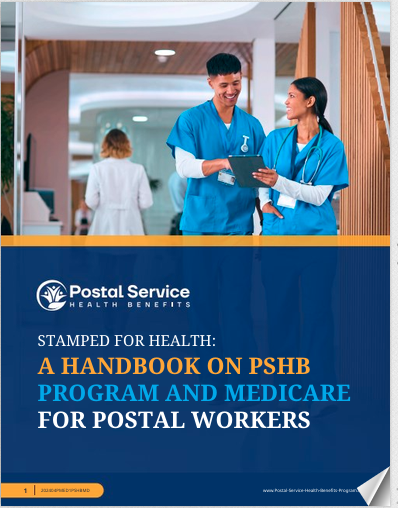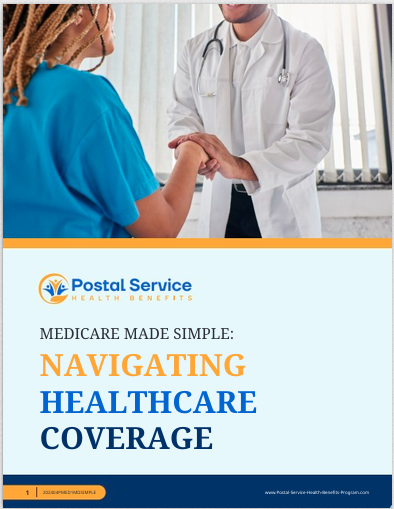Key Takeaways:
- Retirement in 2025 will bring significant changes to postal service health benefits, particularly with the introduction of the Postal Service Health Benefits (PSHB) program.
- Understanding how these changes impact your coverage is crucial for a smooth transition into retirement and continued access to necessary healthcare services.
How Retirement Affects Your Postal Service Health Benefits: What to Expect in 2025
As postal workers approach retirement, the importance of understanding the nuances of their health benefits cannot be overstated. With the upcoming changes slated for 2025, particularly with the implementation of the Postal Service Health Benefits (PSHB) program, it’s essential to know what these changes entail and how they will affect your healthcare coverage in retirement. This article breaks down the key aspects of how retirement will impact your postal service health benefits and what you need to prepare for as these changes come into effect.
The Introduction of the Postal Service Health Benefits (PSHB) Program
In 2025, the Postal Service Health Benefits (PSHB) program will be introduced as a replacement for the current Federal Employees Health Benefits (FEHB) program for postal workers. This shift is part of a broader legislative effort aimed at ensuring the sustainability of health benefits for postal retirees while addressing the unique needs of the Postal Service.
The PSHB program will operate similarly to the FEHB but with a few distinct differences. First, the PSHB plans will be exclusive to postal workers and retirees, separating them from other federal employees. This distinction is intended to provide plans that are more tailored to the specific healthcare needs and usage patterns of postal employees.
However, this transition will require postal retirees to re-enroll in a new plan under the PSHB, even if they were previously covered under the FEHB. It’s crucial for retirees to carefully review the PSHB plans to ensure they select coverage that best meets their healthcare needs in retirement.
What Happens to Your Current Health Benefits?
For those nearing retirement, understanding how their existing health benefits will be affected by the transition to the PSHB is critical. If you are already enrolled in an FEHB plan, your coverage will continue uninterrupted until the PSHB program is fully implemented in 2025. However, you will be required to choose a new plan under the PSHB during a special enrollment period that will be announced closer to the implementation date.
One important aspect to note is that the transition to PSHB will not result in a loss of health benefits. Retirees will still have access to comprehensive health coverage, though the specifics of the plans may vary slightly compared to the current FEHB offerings. The goal of the PSHB is to maintain or even enhance the level of coverage while better managing costs for both the Postal Service and its retirees.
How Will Medicare Integration Work?
A significant change coming with the PSHB program is the mandatory enrollment in Medicare Part B for postal retirees who are 65 or older. This is a key difference from the current FEHB program, where Medicare enrollment is optional but often encouraged.
Under the PSHB, once you turn 65 and are eligible for Medicare, you will be required to enroll in Medicare Part B to maintain your PSHB coverage. The PSHB plans are designed to work in tandem with Medicare, which can help reduce out-of-pocket costs for retirees by coordinating benefits between Medicare and PSHB.
For those who are already enrolled in Medicare Part B, this transition should be relatively seamless. However, retirees who have opted not to enroll in Medicare Part B in the past will need to do so to avoid penalties and ensure their continued coverage under the PSHB. It’s advisable to review the specifics of how Medicare and PSHB will interact to optimize your healthcare coverage in retirement.
What to Expect During the Enrollment Process
The enrollment process for the PSHB will mirror that of the FEHB but with additional considerations due to the transition. During the special enrollment period in 2025, retirees will need to select a new health plan under the PSHB. This period will be crucial as it will determine your healthcare coverage for the foreseeable future.
To prepare, it’s recommended that postal employees and retirees start researching the PSHB plans as soon as details become available. Comparing different plan options, including premiums, covered services, and network providers, will be essential in making an informed decision.
Moreover, the Postal Service will likely provide resources and support to assist retirees in navigating this transition. Staying informed and utilizing these resources can help ensure a smooth enrollment process and prevent any gaps in coverage.
Will There Be Changes to Prescription Drug Coverage?
Prescription drug coverage is another important consideration for retirees, and under the PSHB, this will also see some changes. While details are still emerging, it’s expected that the PSHB plans will include prescription drug coverage that is integrated with Medicare Part D.
This integration aims to streamline prescription benefits and potentially lower costs for retirees who require regular medication. It’s important to review the prescription drug coverage offered under the PSHB to ensure it meets your needs, particularly if you have ongoing prescriptions.
Retirees should also be aware of any formulary changes—the list of covered drugs—under the new PSHB plans. Comparing the PSHB formulary with your current FEHB plan can help you anticipate any changes in coverage for your medications.
The Financial Impact: Costs and Premiums
While specific costs and premiums for the PSHB plans have not yet been finalized, it’s expected that the PSHB will offer a range of plan options with varying premiums. These plans will be designed to meet the diverse needs of postal retirees, but it’s important to carefully consider how these costs will fit into your retirement budget.
One potential advantage of the PSHB is that, by focusing exclusively on postal workers, the plans may be more competitively priced compared to the broader FEHB offerings. However, it’s still crucial for retirees to compare plan options and consider both the premiums and out-of-pocket costs when making their selection.
Preparing for Retirement: What Steps Should You Take?
As retirement approaches, taking proactive steps to prepare for these changes is essential. Here are a few steps to consider:
- Stay Informed: Keep up to date with the latest information about the PSHB program as it becomes available. This will ensure you have the most current details to base your decisions on.
- Evaluate Your Health Needs: Consider your current health status and any ongoing medical needs when selecting a PSHB plan. This will help you choose a plan that provides the best coverage for your situation.
- Budget for Medicare Part B: If you are not already enrolled in Medicare Part B, factor in the cost of these premiums into your retirement budget. Since enrollment will be mandatory under the PSHB, it’s important to be financially prepared.
- Review Plan Options Carefully: During the special enrollment period, take the time to compare the available PSHB plans. Look at factors such as premiums, covered services, and provider networks to make an informed choice.
- Seek Assistance if Needed: If you find the process confusing or overwhelming, don’t hesitate to seek help. The Postal Service and other resources will likely offer guidance to help you navigate these changes.
Anticipating Potential Challenges
While the transition to the PSHB is designed to be as smooth as possible, retirees may still face some challenges. One potential issue could be the disruption of existing provider relationships if your current doctors are not in the PSHB network. It’s advisable to check the network listings of PSHB plans to ensure your preferred healthcare providers are included.
Another challenge could be adjusting to the new Medicare Part B requirement. For some retirees, this may involve additional costs or the need to navigate the Medicare enrollment process if they haven’t done so already. Planning ahead and understanding these requirements will be key to avoiding surprises.
Navigating the Transition with Confidence
As the 2025 transition to the Postal Service Health Benefits program approaches, postal workers and retirees must be proactive in understanding how these changes will affect their healthcare coverage. By staying informed, carefully evaluating your health needs, and preparing for the enrollment process, you can ensure a smooth transition and continued access to the healthcare services you need in retirement.
Contact Information:
Email: [email protected]
Phone: 9515552345







